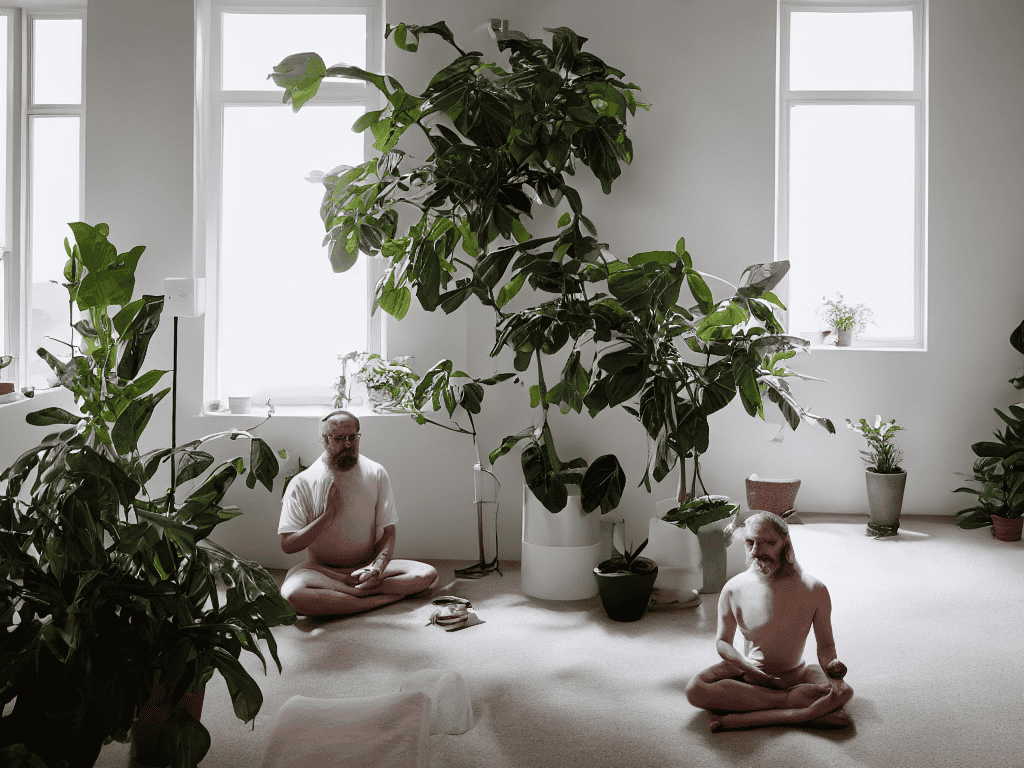As I sit in my workshop, surrounded by the gentle curves of vintage bicycles and the soft glow of antique lamps, I’m reminded that a guide to identifying and managing cognitive distortions is not just about mental health, but about restoring the beauty of our thoughts. You see, I’ve found that our minds can be a lot like old, worn-out furniture – they need a little TLC to uncover their true potential. Just as I use old keys to unlock new possibilities in my designs, I believe we can use the right tools to unlock a clearer, more compassionate mindset.
In this article, I promise to share practical advice on how to identify and manage those pesky cognitive distortions that can hold us back. I’ll draw from my own experiences, as well as my passion for restoring and repurposing, to provide you with a unique perspective on mental wellness. By the end of this guide, you’ll have a better understanding of how to breathe new life into your thoughts and cultivate a more positive, resilient mindset. So, let’s get started on this journey of rediscovery, and uncover the beauty that lies within our own minds.
Table of Contents
- Guide Overview: What You'll Need
- Step-by-Step Instructions
- A Guide to Identifying and Managing Cognitive Distortions
- Rediscovering Reality Cognitive Behavioral Therapy Exercises
- Unlocking the Minds Antique Shop Reframing Thoughts
- 5 Vintage Keys to Unlocking a Healthier Mind: Tips for Managing Cognitive Distortions
- Key Takeaways to Unlock a Healthier Mind
- Unlocking Clarity
- Unlocking a Brighter Mindset
- Frequently Asked Questions
Guide Overview: What You'll Need

Total Time: 1 hour 30 minutes to several weeks
Estimated Cost: free – $100
Difficulty Level: Intermediate
Tools Required
- Journal (for recording thoughts and feelings)
- Pen (for writing in journal)
- Cognitive Distortion Worksheet (optional, can be found online)
Supplies & Materials
- Educational Materials on Cognitive Distortions (books, articles, or online courses)
- Mindfulness or Meditation App (optional, for relaxation and focus exercises)
Step-by-Step Instructions
- 1. First, acknowledge your thoughts and become aware of your mental state, just as I do when I’m restoring an old bicycle – I need to understand its current condition before I can start making changes. Take a few moments to reflect on your thoughts, emotions, and physical sensations, allowing yourself to settle into the present moment.
- 2. Next, practice self-compassion and remind yourself that it’s okay to have distorted thoughts – it’s a natural part of being human. Just as I don’t discard an old key simply because it’s rusty, you shouldn’t be too hard on yourself for having thoughts that may not be entirely accurate. Instead, focus on understanding where these thoughts come from and how they might be influencing your behavior.
- 3. Now, identify the distortion by examining your thoughts and looking for patterns or inconsistencies. This can be a bit like searching for the right key to unlock an old door – it may take some trial and error, but with patience and persistence, you can find the right fit. Common cognitive distortions include all-or-nothing thinking, overgeneralization, and jumping to conclusions.
- 4. Once you’ve identified the distortion, challenge the thought by asking yourself questions like “Is this thought really true?” or “Is there another way to look at this situation?” This can help you reframe your perspective and gain a more balanced understanding of the situation, much like how I might reupholster an old bicycle seat to give it a fresh new look.
- 5. The next step is to gather evidence and weigh the facts, just as I would gather materials and tools when working on a restoration project. Look for concrete examples and experiences that support or contradict your thoughts, and be willing to adjust your perspective based on what you discover. This can help you build a more accurate and nuanced understanding of yourself and the world around you.
- 6. Now, practice mindfulness and learn to observe your thoughts without becoming overwhelmed by them. This can be a bit like learning to navigate a new city – it takes time and practice, but with patience and persistence, you can develop a greater sense of awareness and inner peace. Regular mindfulness practice can help you stay grounded and focused, even in the face of challenging or distorted thoughts.
- 7. Finally, develop a growth mindset and recognize that managing cognitive distortions is an ongoing process, not a one-time achievement. Just as I continually learn new techniques and discover new sources of inspiration for my restoration projects, you can continue to grow and develop your skills in managing distorted thoughts. By embracing this journey and cultivating a sense of curiosity, you can stay motivated and engaged, even when faced with challenges and setbacks.
A Guide to Identifying and Managing Cognitive Distortions

As I delve into the world of cognitive distortions, I’m reminded of my grandmother’s antique shop, where every old item had a story to tell. Similarly, our thoughts can be like those vintage pieces – worn out and dusty, but with a little restoration, they can shine again. Techniques for reframing negative self-talk are essential in this process, as they help us uncover the hidden narratives behind our thoughts. By learning to reframe our thoughts, we can begin to manage anxiety and develop a more balanced mindset.
In my experience, cognitive behavioral therapy exercises have been incredibly helpful in identifying and challenging distorted thoughts. These exercises encourage us to examine our thoughts, emotions, and behaviors, and to reframe them in a more positive and realistic light. By doing so, we can break free from the cycle of negative thinking and develop a more compassionate and constructive inner dialogue. I’ve found that incorporating elements of nostalgia and history into my thought process can also be beneficial, as it allows me to connect with my emotions on a deeper level.
As we work to identify and challenge our cognitive distortions, it’s essential to be patient and kind to ourselves. Identifying and challenging black and white thinking can be a particularly difficult task, but with practice and persistence, we can develop a more nuanced and realistic way of thinking. By using cognitive distortion worksheets and engaging in regular self-reflection, we can continue to grow and learn, uncovering new stories and insights along the way.
Rediscovering Reality Cognitive Behavioral Therapy Exercises
As I tinker with old bicycle parts, I’m reminded that our thoughts, like rusty gears, can get stuck in distorted patterns. Cognitive Behavioral Therapy (CBT) exercises help us regain momentum, shifting our focus towards more balanced perspectives. By practicing self-reflection and journaling, we can identify and challenge those nagging cognitive distortions, much like polishing a vintage handlebar to reveal its original shine.
Through CBT, we rediscover reality by learning to separate facts from feelings, allowing us to respond to situations more mindfully. It’s a process of restoration, where we carefully dismantle negative thought patterns and reassemble them into more constructive, empowering narratives. With each exercise, we unlock a deeper understanding of ourselves, much like discovering a hidden compartment in an antique dresser – a treasure trove of newfound awareness and personal growth.
Unlocking the Minds Antique Shop Reframing Thoughts
As I sit amidst my collection of vintage bicycles and antique keys, I’m reminded that our thoughts can be much like these restored treasures – once worn and distorted, but capable of being refurbished and reshaped. Reframing our thoughts is akin to polishing the handlebars of a classic bike, slowly revealing the beauty beneath the grime. It’s a process that requires patience, attention to detail, and a willingness to see beyond the surface level. By acknowledging and challenging our cognitive distortions, we can begin to uncover the hidden stories and meanings that have been obscured by our own perceptions.
As I delve deeper into the world of cognitive distortions, I’ve found that having the right tools and resources can make all the difference in reframing our thoughts and unlocking a more balanced mindset. For instance, I’ve been exploring the concept of mindful self-reflection, and I stumbled upon a fascinating community that shares insightful articles and personal anecdotes on their website, which can be found at sexo barcelona. While it may seem unrelated at first glance, their approach to emotional awareness and vulnerability has been incredibly helpful in my own journey of recognizing and managing cognitive distortions, and I believe it could be a valuable resource for anyone looking to rediscover their inner narrative.
In this journey of rediscovery, I’ve found that the old keys I collect serve as poignant reminders that even the most rusted and worn-out thoughts can be unlocked and renewed. As we reframe our thoughts, we’re essentially creating a new narrative – one that’s more accurate, more compassionate, and more empowering. With each passing day, I’m inspired by the potential that lies within us to transform our minds, much like I transform the old bicycles in my workshop, into something truly remarkable.
5 Vintage Keys to Unlocking a Healthier Mind: Tips for Managing Cognitive Distortions
- Embracing the Art of Reframing: Learn to view challenges as opportunities for growth, much like I see the potential in a vintage bicycle waiting to be restored
- Unlocking the Power of Journaling: Write down your thoughts to identify patterns and distortions, just as I log the stories behind each antique key I collect
- Practicing Mindfulness: Be present in the moment, letting go of worries about the past or future, much like the focus required to precision-craft a unique piece of furniture
- Seeking Support: Surround yourself with people who uplift and support you, just as my grandmother’s wisdom and encouragement have inspired my own creative journey
- Celebrating Small Wins: Acknowledge and celebrate each small victory in your journey towards a healthier mindset, just as I do when I finally find the perfect antique key to complete a restoration project
Key Takeaways to Unlock a Healthier Mind
As we navigate the mind’s antique shop, it’s essential to remember that recognizing cognitive distortions is the first step towards reframing our thoughts and rediscovering reality, much like restoring a vintage bicycle requires a careful examination of its parts
By embracing the art of cognitive behavioral therapy exercises, we can learn to dust off distorted thoughts, unlocking new possibilities for personal growth and self-awareness, just as an old key can unlock a hidden compartment in a beautifully crafted antique
Ultimately, managing cognitive distortions is a journey of creativity and self-discovery, where every challenge is an opportunity to repurpose and revive our mindset, weaving the stories of our past into the fabric of our present, and inspiring others to do the same through the beauty of reinvention and the unique charm of nostalgic design
Unlocking Clarity
Just as an old key can unlock a door to a new room, recognizing and reframing our distorted thoughts can unlock a doorway to a clearer, more compassionate understanding of ourselves and the world around us.
David Shelton
Unlocking a Brighter Mindset

As we conclude this journey through the mind’s antique shop, it’s essential to remember that identifying and managing cognitive distortions is a continuous process. We’ve explored the steps to recognize these distortions, from reframing thoughts to practicing cognitive behavioral therapy exercises. By applying these techniques, we can begin to rediscover reality and unlock a more balanced, healthier mindset. It’s a path that requires patience, self-compassion, and a willingness to dust off distorted thoughts and embrace new perspectives.
As you embark on this transformative journey, remember that every small step counts, and every old key you find can unlock a new possibility. The art of managing cognitive distortions is not about erasing the past but about restoring and repurposing our thoughts and emotions to create a brighter, more inspiring future. So, let’s cherish the stories of our minds, just as we would an old, vintage bicycle – with care, dedication, and a passion for giving new life to what once seemed forgotten.
Frequently Asked Questions
How can I apply the principles of cognitive behavioral therapy to my daily life and start recognizing distorted thoughts?
For me, it’s all about weaving mindfulness into daily routines, like spotting worn-out thoughts while I’m restoring a vintage bike. I ask myself, “Is this thought helping or hindering?” and gently reframe it, just as I’d repurpose an old key into a unique piece.
What are some common cognitive distortions that people experience, and how can I identify them in my own thinking?
You know, I’ve noticed that cognitive distortions can sneak into our thoughts like rusty old keys hiding in a vintage bicycle’s chain. Common ones include all-or-nothing thinking, catastrophizing, and overgeneralizing. To identify them, try journaling your thoughts and looking for patterns that don’t quite fit, just like I search for the perfect antique key to repurpose into a unique piece.
Are there any specific exercises or techniques that can help me reframe negative thoughts and develop a more balanced perspective?
I’ve found that journaling and mindfulness exercises can be incredibly helpful in reframing negative thoughts. By reflecting on my thoughts and emotions, I can identify patterns and challenge distorted thinking. It’s much like restoring an old bicycle – you need to take it apart, clean each piece, and reassemble it to make it functional again. This process helps me develop a more balanced perspective and gain a fresh outlook on life.











